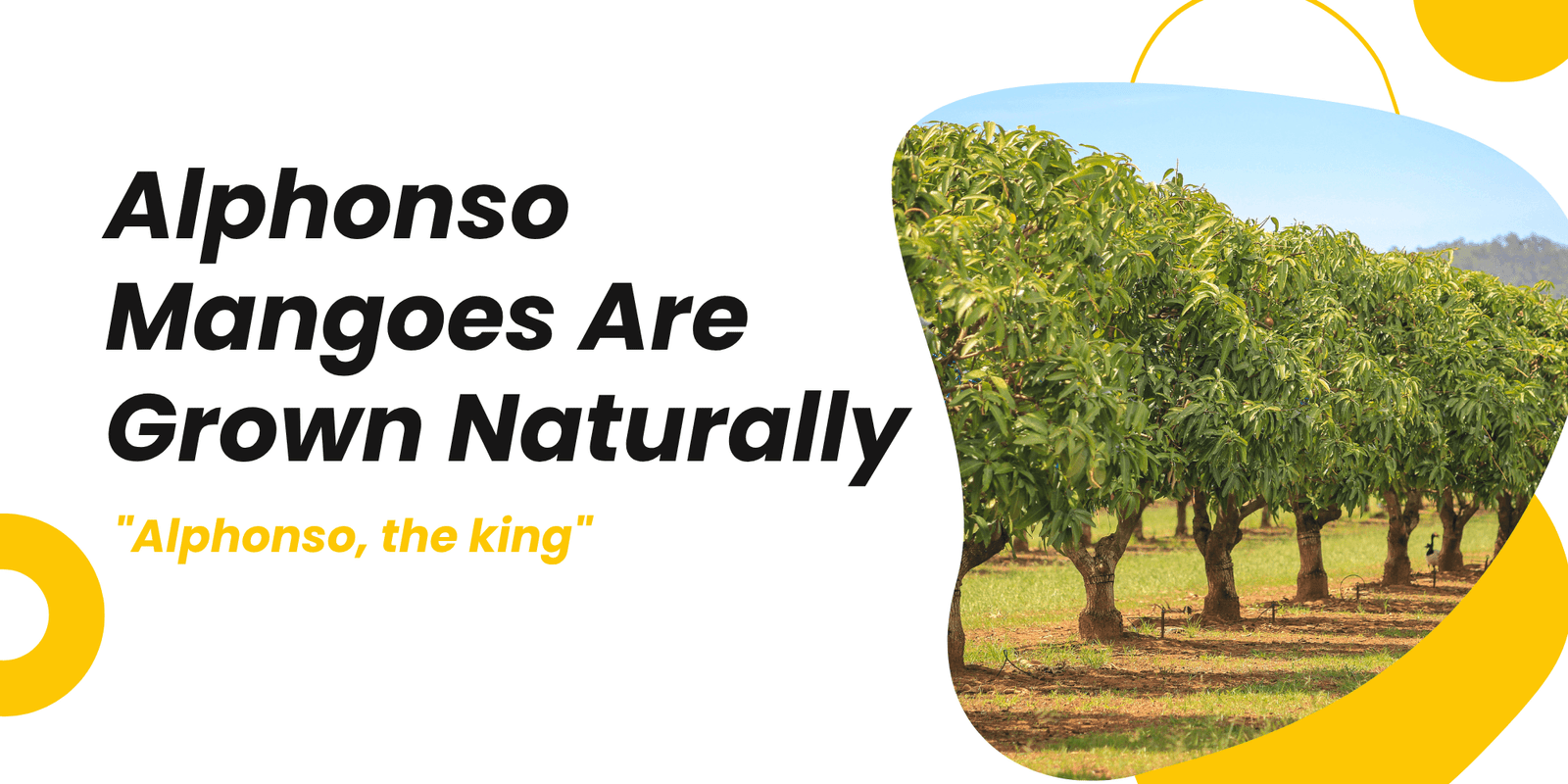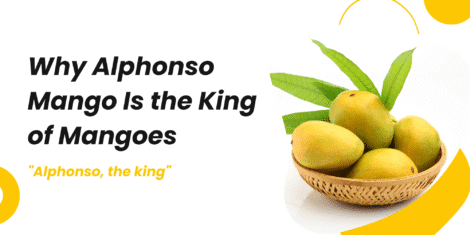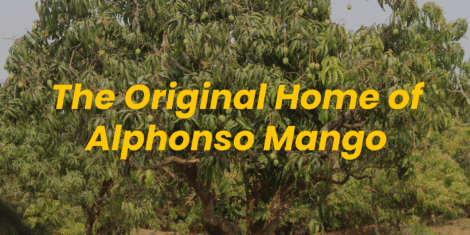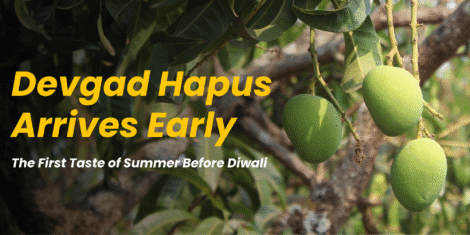The Alphonso mango—popularly known as Hapus—is considered the king of mangoes for good reason. Its sweet aroma, rich flavor, and buttery texture make it a summer favorite across India and beyond. But few people know the amount of time, care, and natural methods that go into growing this incredible fruit.
Here’s a look at how Alphonso mangoes, especially those from Ratnagiri and Devgad, go through a patient and natural journey from flower to fruit.
1. Flowering (December to February)
The journey begins in late December to early February, when mango trees begin to flower. Farmers call these clusters of tiny flowers “moha” in Marathi.
- Most trees bloom once a year.
- These flowers are extremely sensitive to climate—sudden temperature changes or unseasonal rain can cause “flower burn” and reduce fruit yield.
To maintain flowering naturally, farmers:
- Avoid synthetic fertilizers.
- Use organic inputs like cow dung, compost, and neem-based solutions.
- Monitor trees regularly to protect flowers from pests like hoppers and mealybugs.
2. Natural Pollination
Pollination in mango trees happens through insects and wind. Honeybees play a key role in transferring pollen from male to female flowers.
Farmers often:
- Maintain natural surroundings to support bee activity.
- Avoid spraying harmful pesticides during flowering.
This step is crucial because poor pollination leads to fewer mangoes.
3. Fruit Setting (February to March)
Once flowers are pollinated, tiny mangoes begin to appear. This is called fruit setting.
At this stage:
- Farmers thin out excess fruitlets to allow remaining ones to grow better.
- Trees need regular watering but no waterlogging.
- Natural sprays like buttermilk or jeevamrut are used to keep trees healthy.
4. Natural Growth & Ripening (March to May)
Alphonso mangoes grow slowly and ripen on the tree. They need:
- Plenty of sunlight,
- Cool nights, and
- Dry weather for the best flavor and aroma.
Farmers from Ratnagiri and Devgad follow traditional methods, avoiding harmful chemicals. They often:
- Cover fruits with straw or paper bags to protect them from birds and insects.
- Do not use carbide or artificial ripening agents.
This natural ripening process gives Hapus its signature golden color, thin skin, and intense sweetness.
5. Harvesting by Hand
Each mango is hand-picked early in the cool morning. The fruit is picked before it fully ripens to prevent damage during transport.
- Mangoes are sorted based on size and quality.
- Farmers use hay and wooden crates to keep them cushioned and fresh.
Only the best are selected for sale or export.
6. Natural Ripening in Grass
Instead of using chemicals, real Alphonso mangoes are ripened using hay or rice straw in naturally ventilated rooms.
This method:
- Mimics how fruits would ripen under a tree.
- Takes 5–7 days for perfect ripeness.
- Preserves the aroma, sweetness, and health benefits of the mango.
Why Natural Farming Matters
Natural and organic practices:
- Protect the soil and groundwater.
- Preserve authentic taste and nutritional value.
- Avoid exposing consumers to harmful chemicals.
- Support sustainable farming and fair prices for local farmers.
Where to Buy Naturally Grown Alphonso Mangoes?
At RatnagiriHapus.Store, we deliver naturally grown, GI-certified Alphonso mangoes straight from the farms of Ratnagiri and Devgad to your doorstep.
Each box is:
- Packed with care,
- Free from artificial ripening agents,
- Traceable to the farm it came from.
Final Thoughts
The journey from flower to fruit takes time and is steeped in tradition. When you bite into a ripe Alphonso mango, you’re savoring months of waiting, nature’s cycle, and a farmer’s hard work.
So next time you pick a Hapus, choose one that’s grown the right way—naturally.




